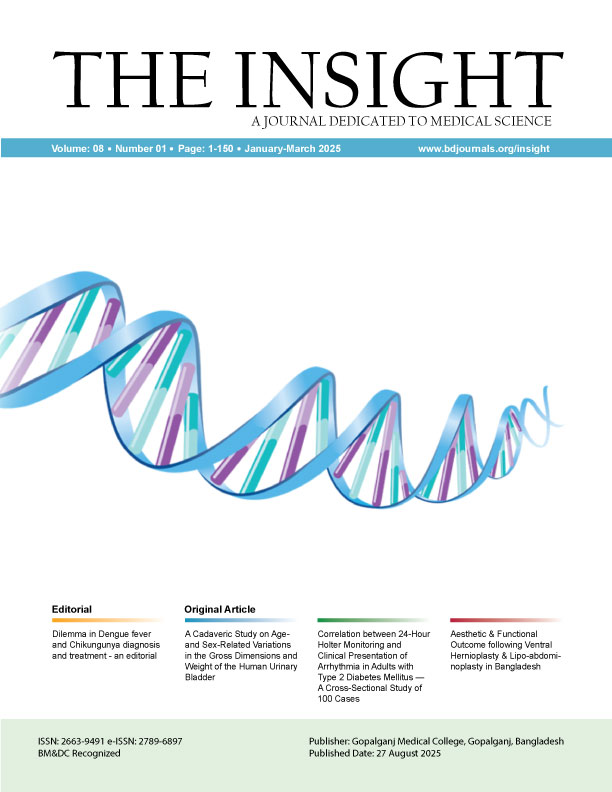
BD Journals.org is a publishing platform founded by Professor (Dr.) HN Sarker in early 2021. The aim of the publication platform is to promote research in Bangladesh and serves as a media for the dissemination of scientific information and recent knowledge among the readers. Two reputed peer reviewed journals “The Planet”- an official journal of Sher-E-Bangla Medical College, Barishal, Bangladesh and “The Insight”- an official journal of Sheikh Sayera Khatun Medical College, Gopalganj, Bangladesh are now being published in this website.

The Insight is the official journal of Gopalganj Medical College, Gopalganj, Bangladesh and accepts articles for publication from home and abroad. This is a quarterly peer-reviewed journal and aims to publish work of the highest quality from all branches of medical science. The aim of the publication is to promote research and serves as a media for the dissemination of scientific information and recent knowledge among the readers.
e-ISSN: 2789-6897 ISSN: 2663-9491

The Planet is the official journal of Sheikh Sayera Khatun Medical College, Gopalgonj, Bangladesh and accepts articles for publication from home and abroad. This is a biannual, peer-reviewed journal and aims to publish work of the highest quality from all branches of medical science. The aim of the publication is to promote research in Bangladesh and serve as a media for dissemination of scientific information and recent knowledge among readers.
ISSN (Print): 2617-0817 ISSN (Online): 2789-5912

International Journal of Medical and Dental Research (IJMDR)is the official journal of the Society of Retired Professors of Medical Science and accepts articles for publication from home and abroad. This is a biannual, peer-reviewed journal and aims to publish work of the highest quality from all branches of medical science. The aim of the publication is to promote research in Bangladesh and serve as a media for the dissemination of scientific information and recent knowledge among readers.
ISSN (Print): 2959-0159 ISSN (Online): 2959-748X